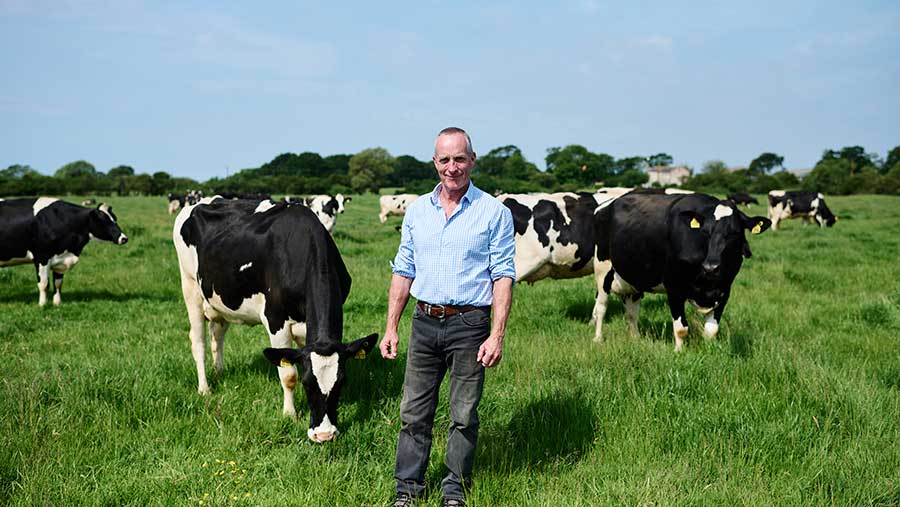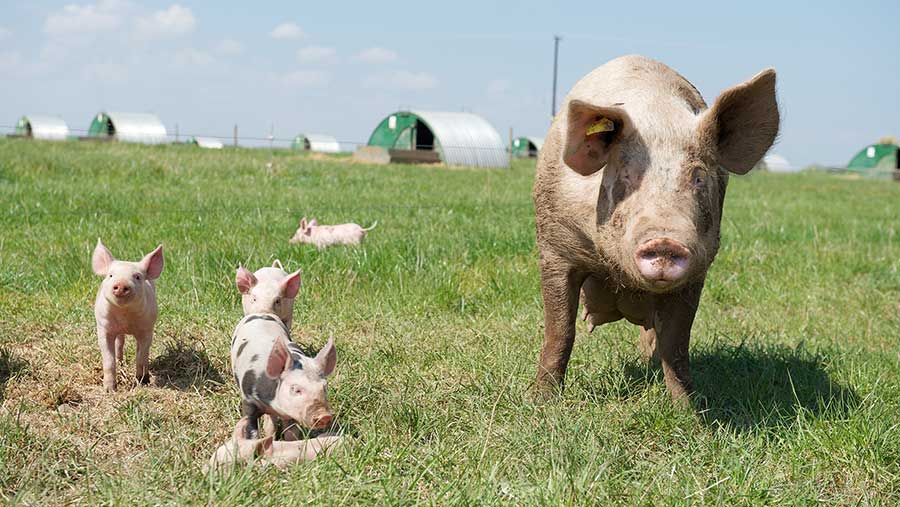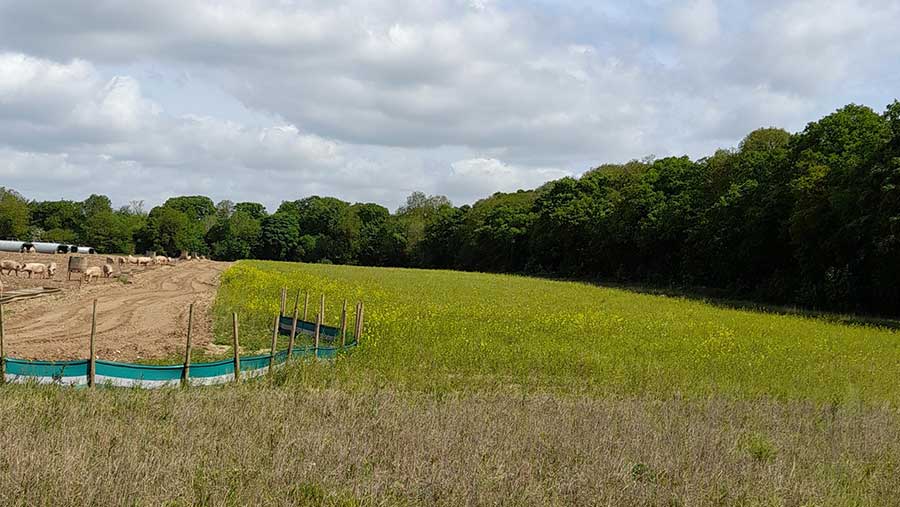Advertiser content
M&S Select Farms find new approaches to sustainable agriculture
Provided by
M&S backs British farming.
We know our customers want to know where their food comes from and are increasingly concerned around ethical sourcing and the sustainability of food. That’s why Marks & Spencer works with more than 7,000 farmers across the UK that we know and trust to source our products with the utmost care.
When it comes to supporting British farming, our commitment has always been based on the great work being done every day on farms across the country – not just in terms of high production standards, but also in providing wildlife habitats, looking after soil health, and ensuring the land is managed for the benefit of future generations.
To support this further, M&S has started a new five year 'Farming with Nature' collaborative programme to help its Select Farmers become more resilient to the biggest environmental challenges they face – spanning climate change, biodiversity, soil health and water usage.
Find out more at marksandspencer.com
 © Marks & Spencer
© Marks & Spencer Our Farming with Nature programme was launched in 2021 to more than 7,000 produce and livestock M&S Select Farms in the UK.
Its aim is to help our Select Farmers become more resilient to the environmental challenges they face.
As part of this programme, we have established a network of 19 Indicator and Innovation farms to trial and monitor new approaches to sustainable agriculture and communicate the learnings with our wider farmer supply base.
Here’s an update on some of the great work that’s been taking place.
Chris, Caroline and Joseph Spiby, M&S Select Farm British Milk
Chalder Farm is run by Chris, Caroline and Joseph Spiby, who are tenants of the Church Commissioners.
The farm is located on the Chichester Coastal Plain, bordering the RSPB Pagham Harbour local nature reserve.
The Spiby family are working with Colin Hedley from the Farming and Wildlife Advisory Group (FWAG) to make sure they get the most out of their participation in the Farming with Nature Programme.
Making changes that improve water quality is one of Chris’ key objectives because of the multiple watercourses that flow from Chalder Farm into the nature reserve.
“Over the last two years, we have reduced nitrogen rates quite significantly on our grass silage and maize crops,” comments Chris.
“We are looking to go a lot further through the use of multi-species leys, including the use of nitrogen-fixing legumes and deep rooting plants, to help with drought tolerance as the farm can really suffer in summer.”
Chris hopes that the legume leys will help reduce both the amount of nitrogen fertiliser that needs applying and methane emissions from the herd, in addition to better-quality forage with higher protein content.
In turn, Chris expects a reduction in the farm’s footprint through less purchased feed and reduced ammonia emissions.
Colin has been continually assessing the soil across Chalder Farm, and has observed how quality and composition changes with farm activities.
“Last autumn, we undertook our second soil sampling where we recorded soil structure, earthworm counts and undertook a visual assessment,” he explains.
“Generally, the soils were in great condition, with very pleasing amounts of organic matter at over 5%. In our earthworm observations – which are good indicators of soil health and indicate the potential for significant benefits to plant productivity – we found greater numbers in the second-year leys.”
Chris is also looking to expand the area on which his herd graze and, in doing so, transform it into a more species-rich habitat.
The farm has a large breeding colony of cattle egrets which feed amongst the grazing cows on the water meadows.
“During my last survey, we identified a field close to the sea wall which, due to the watercourses running through it, was becoming increasingly colonised by reed-bed,” says Colin.
“Within the field however, using satellite imagery, we discovered an area which could become very good flower-rich grassland, so we are planning on creating a gateway for the heifers to allow them to graze the area and help promote species such as the southern marsh orchids which we have discovered in surveys.”
There are good numbers of rare bird species on the farm, including curlew, lapwing, skylark, yellowhammer, linnet and grey partridge.
Chris is keen to support these populations using wild bird-feed plots distributed widely across the farm and introducing wildflowers into the established network of six-meter-wide grass margins which surround every arable field.
The cultivated seed mixture plots have also thrown up some nice surprises.
“Last summer we found corn spurrey and field woundwort which I have never found in the area before. Not only is this a sign of a thriving ecosystem, but those plants will bring benefits in their own right such as the attraction of more insect species, as well as adding ecological diversity.”
“Looking ahead, we want to establish a rotation where arable land is split into two: half will be in the multi-species leys for four years, and the other half would be in a maize/vetch/ryegrass rotation, which will be key in keeping the soils protected throughout winter and hold both nitrogen and phosphate,” explains Chris.
“Elsewhere, we are working with our agronomist to start utilising sulphur-based fertilisers which can help reduce nitrogen inputs, and we are also looking into installing a bio-gas recovery system, something the Church Commissioners are keen to get on board with.”
Cranswick PLC, M&S Select Farm British Outdoor Bred Pork
Cranswick plc has had a longstanding relationship with M&S and has been supplying RSPCA Assured high welfare, outdoor-reared pork for more than ten years.
One of Cranswick’s outdoor breeding farms became an indicator farm in 2021.
The farm was already making great strides when it comes to environmental improvements and being part of the M&S programme has helped drive further change to achieve key objectives such as reducing the impact of pig farming on climate, water and soil and increasing biodiversity.

© Marks & Spencer
Ash Gilman, director of agricultural strategy at Cranswick, tells us more.
“We stationed the farm on a well-established grass ley after successfully undersowing it within a maize crop, and this has certainly proved beneficial, particularly with the abnormal weather we observed throughout 2022”, explains Ash.
“We opted for grass varieties that are much more rigorous and deeper-rooting, and this has helped create soils with a higher organic matter content that are more resilient to both drought and erosion.
“This also laid the foundation for successful buffer strips, which we bolstered with wildflowers to help boost insect numbers,” he continues.
“We have recently installed several bio-acoustic listening devices made by Agrisound across the unit to provide vital information on the biodiversity in and around the unit.”
Across two of Cranswick’s outdoor breeding farms, there was an estimated abundance level of approximately 48,000 pollinators, which is a very encouraging number.
“In the future, we would like to be able to create a ‘pollinator-map’ across the pig units, to understand in greater depth how the activities we are undertaking are helping pollinator and insect numbers.
“This aligns nicely with the carbon mapping we will undertake when the unit moves this autumn – we want to be able to correlate carbon uplift with biodiversity to pinpoint where we are having the most positive impacts.”

© Marks & Spencer
Although hard to measure, Cranswick has observed marked improvements in the amount of run-off from the pig farms, compared to previous sites.
“During periods of intense and prolonged rainfall over the last two winters, we did not record much run-off despite it being a site on gently sloping ground, suggesting the undersown grass and buffer strips appear to have worked well,” Ash comments.
“We have also been working closely with the Norfolk Rivers Trust, whose expertise and software ensured we located and paid out the farm optimally with regards to topography and contours to aid in run-off reduction.”
On their plans for the future, Ash says: “Looking ahead, we are trying to align the landowner’s Countryside Stewardship Scheme with our outdoor farms, so they can put down a grass clover and legume mix six months ahead of establishing the site, ensuring we have that great cover for when we do move in the autumn.
“This is part and parcel of improving best practice and preparing for the transition to the Sustainable Farming Incentive when it becomes more widely adopted.”
